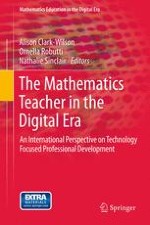2014 | OriginalPaper | Buchkapitel
Teaching Roles in a Technology Intensive Core Undergraduate Mathematics Course
verfasst von : Chantal Buteau, Eric Muller
Erschienen in: The Mathematics Teacher in the Digital Era
Verlag: Springer Netherlands
Aktivieren Sie unsere intelligente Suche, um passende Fachinhalte oder Patente zu finden.
Wählen Sie Textabschnitte aus um mit Künstlicher Intelligenz passenden Patente zu finden. powered by
Markieren Sie Textabschnitte, um KI-gestützt weitere passende Inhalte zu finden. powered by
